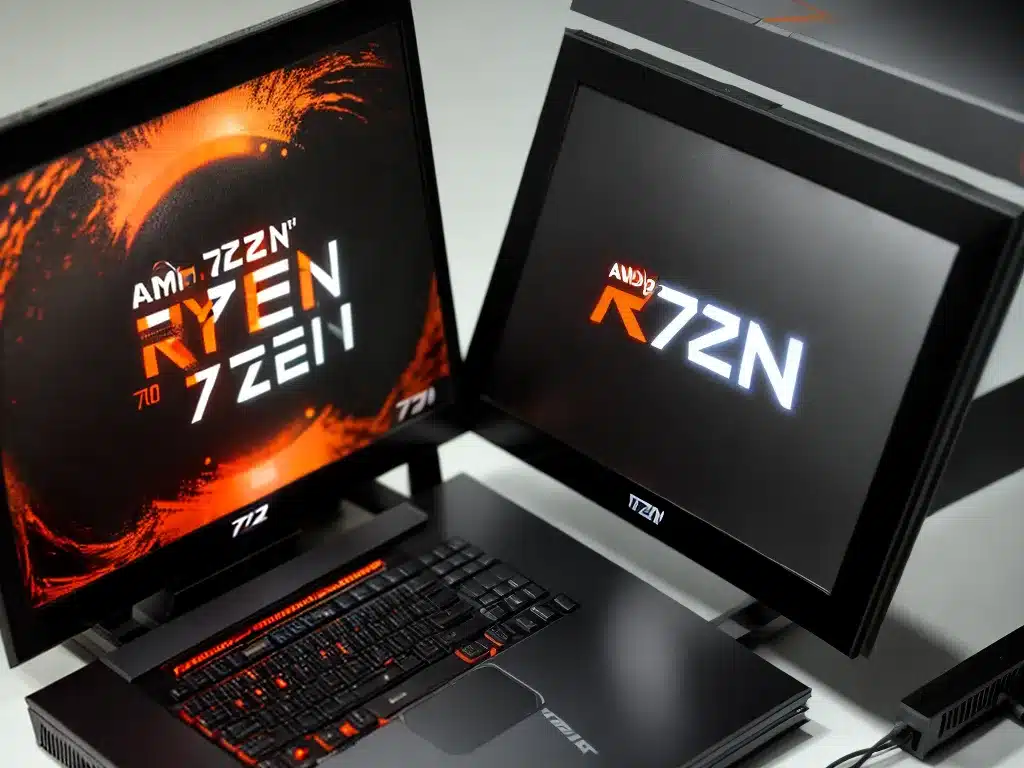AMD is gearing up to launch their next-generation Ryzen 7000 desktop processors based on the Raphael architecture later this year. These new CPUs will bring significant improvements in performance, efficiency and platform capabilities. Here is everything I know so far about the upcoming Ryzen 7000 Raphael desktop processors:
Overview of Ryzen 7000 Raphael CPUs
The Ryzen 7000 series will be the first desktop processors from AMD to be built on the 5nm process node. This alone should bring impressive gains in performance per watt compared to the existing Zen 3 chips on 7nm.
Raphael will also be the first CPU architecture from AMD to support the new AM5 platform. AM5 brings the latest connectivity like PCIe 5.0 and DDR5 memory support. It also uses the new LGA1718 socket rather than the usual PGA socket to better support the move to DDR5 and higher power delivery.
Key highlights of AMD Raphael CPUs:
- Built on TSMC 5nm process for improved efficiency
- New Zen 4 core architecture for instructions per clock (IPC) gains
- Support for DDR5 memory and PCIe 5.0 on AM5 platform
- Increased L2 cache size from 512KB to 1MB per core
- Rumored core counts up to 16 cores for Ryzen 9 models
Zen 4 Core Architecture Details
The Ryzen 7000 chips will utilize the updated Zen 4 architecture to replace the current Zen 3 design powering 5000 series CPUs.
Zen 4 is expected to deliver around 8-10% IPC gains through improvements to the core design. AMD has focused on boosting performance in single-threaded workloads.
Some key changes in the Zen 4 architecture:
- Redesigned floating point units for better math throughput
- Larger Op caches for instruction storage
- Enhanced branch prediction with a new BTB design
- Better hardware acceleration for AI tasks like machine learning
Combined with the node shrink to 5nm and higher clock speeds, we can expect some nice performance uplifts from Zen 4 cores.
5nm Process Node and Chiplet Design
AMD will manufacture Raphael CPUs on TSMC’s cutting-edge N5 process technology (5nm node). The smaller transistors enabled by this advanced node should provide:
- Higher transistor density – around 1.8x of 7nm
- Improved power efficiency – up to 30% at same performance
- Ability to drive higher clock speeds while maintaining TDP
Raphael is expected to retain the chiplet design used on previous Ryzen chips. This means each CPU will combine:
- Multiple Zen 4 core chiplets – up to 12 cores each
- A central I/O die fabricated on 6nm for memory, PCIe lanes
The chiplet approach allows AMD to mix-and-match different core configurations and improve yields.
DDR5 and PCIe 5.0 Platform Support
The move to the new AM5 platform will allow Raphael CPUs to take advantage of the latest standards including:
- DDR5 memory support – on-die DDR5 controllers
- Up to DDR5-6400 speeds out of the box
- Double the bandwidth of DDR4 with lower voltage
- PCI Express 5.0 – first desktop CPU with PCIe 5.0 lanes
- Up to 128 GB/s bidirectional bandwidth
- Improved performance for GPUs and SSDs
Motherboards will play a key role in fully realizing the benefits of DDR5 and PCIe 5.0 for AM5 systems.
Larger L2 Cache and V-Cache Models
AMD has significantly increased the amount of L2 cache per core with Raphael CPUs to 1MB up from 512KB on Zen 3.
More on-die L2 cache should help reduce memory latency for improved performance in many workloads.
Higher-end models are also rumored to get AMD’s 3D V-Cache technology, similar to the Ryzen 7 5800X3D. This could add up to 64MB of L3 cache stacked vertically over the cores using TSMC’s advanced packaging.
Expected Core Counts and Performance
Based on leaks so far, Raphael will likely be launched in the following configurations:
- Ryzen 5 – up to 8 cores
- Ryzen 7 – up to 12 cores
- Ryzen 9 – up to 16 cores
The flagship 16-core Ryzen 9 models should deliver multi-threaded performance gains of around 15% over the Ryzen 9 5950X.
Gaming performance is expected to get a healthy uplift as well thanks to the stronger single-threaded throughput from Zen 4. V-Cache variants could see bigger gains in gaming.
Overall, AMD is touting >15% higher performance per watt which is critical for enthusiasts, overclockers and SFF PC builders.
Power Management and Overclocking
To support the move to DDR5 memory and increased core performance, Raphael will use a more advanced dual-rail power delivery system. This allows more granular control over voltage levels.
AMD is also introducing PBO 3.0 (Precision Boost Overdrive) to give enthusiasts more flexibility for overclocking on AM5 motherboards.
There should be good headroom for overclocking thanks to:
- Advanced 5nm manufacturing process
- Robust AM5 motherboard power design
- Dual-rail power delivery and PBO 3.0 features
Expected Release Date
AMD has stated that Ryzen 7000 Raphael CPUs will launch in the second half of 2022.
Many reports indicate the actual release window will likely be September 2022, around two years after Zen 3.
AMD CEO Lisa Su has confirmed that AM5 platform motherboards and DDR5 memory will hit the market alongside the new Raphael processors.
Overall, the Ryzen 7000 series brings some major advancements that will continue AMD’s competitive edge in the desktop CPU space. With powerful Zen 4 cores, cutting-edge 5nm process technology, DDR5 and PCIe 5.0 support, Raphael looks very promising for high-end gaming and content creation needs. I’m excited to see the official performance unveiling later this year.













